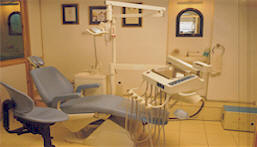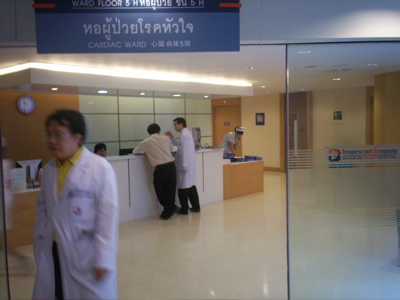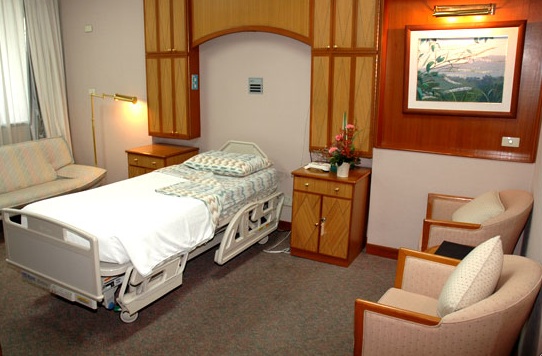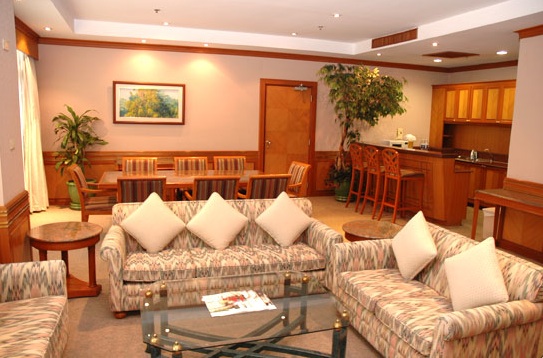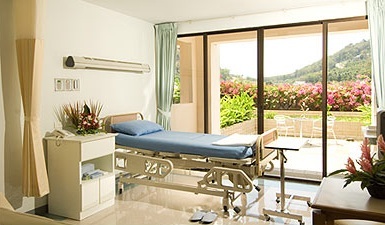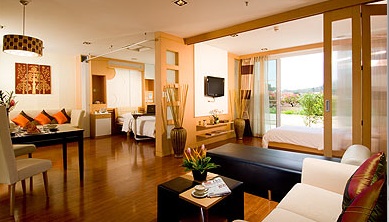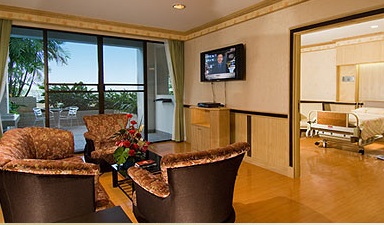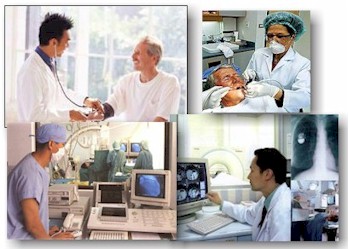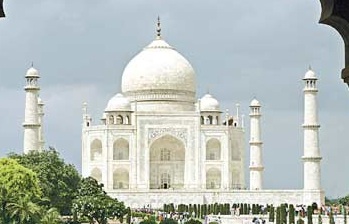
|
Medical Tourism For most people needing medical care, the last thing on their minds is travel but a growing number of American medical tourists are setting out for India, Thailand and Latin America for everything from dental work to breast implants to major heart surgery. Rising health care costs in the US push people to seek medical treatments elsewhere, while medical facilities in developing countries have not only caught up to western standards but also in many ways exceeded them. These tourists are usually surprised to find brand new facilities and equipment as hospitals and medical tourism hubs around the world join in the fierce competition for this fast growing market. This series of articles explores the reasons for going overseas and for staying home, as well as a comparison of major medical tourism hubs and an in-depth look at two hospitals that cater to international patients. While price is the major factor that first leads patients to look overseas for health care, there are a number of other benefits that often escape notice, though the price difference remains the prime motivator for most people. Medical tourism has its perils, however, and the aspiring tourist should be familiar with possible problems and have a good idea about which hub is right for them long before planning the details of a trip. 5 Reasons to Go Overseas 1. Price This is the main reason most people initially cite for their decision to go overseas for medical treatment, but the situation is actually even better than the bare numbers suggest. Figures that are normally thrown out range from one quarter to one tenth the price of US care, with dental work firmly occupying the one-tenth corner. These estimates are based on India, which is commonly the lowest priced option of sufficient quality for Westerners. While there is considerable variation, as a rule of thumb Thailand, India’s major competitor, is approximately 20% more expensive while the South American and other medical tourism hubs weigh in at 50-100% more than India.
Dental work is the biggest saver with medical tourism – 90% savings across the board are standard in India and Thailand with excellent facilities. As a rule of thumb, minor work on one tooth will pay for your plane ticket and a second pays for a week on the beach afterwards. Major surgery will pay for your entire family. Imaging and diagnostics are a large part of medical fees, and many US hospitals now contract with Indian laboratories to interpret X-rays and MRI images, where the physician time to analyze the image often costs as much or more than the image itself. Unfortunately, many patients aren’t able to travel if they need an MRI, but if it is a component of a surgery or checkup it is widely available at most high-end hospitals that medical tourists frequent, along with more advanced diagnostic equipment in some of the best facilities. Beyond having a lower price, however, foreign hospitals are far more willing to provide upfront prices and quotes than US hospitals, which will generally equivocate and, if pressed, give only a rough estimate. More complicated surgeries will still be estimates at foreign clinics, but they are consistently more forthcoming about the cost of past procedures and for minor procedures they will often offer set packages that cap the total cost, barring complications. These caps are excellent for planning purposes and comparing options in various countries. This openness is a product both of intense competition for foreign patients and a confidence that regardless of how high a foreign clinics’ price may be, it will still be much lower than their Western competition. Medical tourism reverses the trend of many businesses and the tourism industry in general in that those looking overseas can expect more honesty up-front and fewer hidden costs than those considering a US hospital. Table: Comparing
Medical Treatment Pricing
Dental Fees at Bangkok International
Hospital in Thailand
One common misconception is that while foreign medical procedures are much cheaper, they must be paid out of pocket. It is telling that even with this belief, the deductible for many insured patients is so high that they still travel overseas for treatment. The reality is that most insurers are not only willing to reimburse your medical expenses overseas, they will often be thrilled to solve your problem without paying domestic medical rates. The issue then becomes getting your records and receipts to the appropriate insurance official. Many hospitals boast strong ties with insurance companies and service with regards to clearing claims as their key advantage over competitors. If insurance reimbursement is an important part of your medical tourism deliberations, it is important to learn up front if your prospective hospital offers this service and it will be worthwhile to go to a more expensive center if they do not. This is particularly important when looking at Indian hospitals, which often are very poor in this regard. Tourists from countries with state-run medical systems like Canada and the UK can also often get their treatments reimbursed, though they will need to locate the appropriate offices and forms ahead of time. 2. Service
If staying overnight in the hospital, the benefits of medical tourism are overwhelming. A deluxe suite at Bangkok’s Bumrungrad or Bangkok International Hospital includes a large bedroom, living room, two complete bathrooms and a city view for $200 a night, ultimately $400 including nursing, equipment, flat panel TVs, Wifi and meals for three. This should be compared to a single room in the US, which will run upwards of $800 for the room, not including services and other charges. When staying multiple nights with a family member, the value of having the extra room (and complimentary roll-in beds) cannot be understated. Rooms get cheaper, including singles and even shared rooms, but also get even grander. For the price of a basic single in the United States, a medical tourist could rent an Imperial or Royal Suite at these Thai hospitals, including guest bedrooms, a living room and a dining room. These are especially popular with wealthy Arabs and are often booked weeks or months in advance.
With that in mind, a properly selected doctor for your medical tour will have been trained in the US or Western Europe and, after years of college, med school and residency abroad, they will speak flawless English (many patients prefer a charming English accent, finding it comforting, luxurious or both). With some support from a good agent, you can generally get a doctor that is known as one of the country’s best in the field. This leads to one of the common points critics of medical tourism make: that medical tourists use up a country’s best doctors and facilities, leaving only the lower quality doctors for the local population. This is absolutely true. There are few cancer patients, however, so concerned with social justice that they would willingly see an inferior physician when a better doctor was available. Medical care is about getting the absolute best treatment that can be gotten and is inherently a selfish pursuit. Medical tourism effectively allows a middle-class patient from the developed world to receive upper-class treatment. Quality goes up, not down.
Pictures above:
(left) Phuket beach in Thailand and (right) Taj Mahal in India
Medical tourism is often as much about the tourism as the medicine. For those undergoing major surgery, there is no better place to recover than a bungalow with a view of the beach while receiving your physical therapy (or massage). Similarly, for family accompanying a patient a week at the beach or a shopping spree can clear up a lot of stress following a surgery. South Africa offers safari medical tourist packages, where a family visits for treatment followed by a wildlife safari. Individual hospitals will often have associated travel agents that will arrange all manner of getaways following an operation. For those not going under the knife, there is even more incentive to be a medical tourist. Given the cost of dentistry, the savings for even minor work can cover the cost of the trip. Many regular medical tourists will plan their physical exams, dental work and other minor services, like cosmetic surgery, and bundle them in with a weeklong beachside vacation in the tropics. Overall, their vacation is still cheaper that having the services in the US. Many companies are also appreciating this strategy, sending employees on vacations to save on medical costs and saving on health insurance while giving their workers care they otherwise might not have access to. 3 Reasons Not To Travel… Language and Culture Barrier While good English can be expected from your doctor and hospital staff, many medical tourists have little experience traveling overseas and especially in non-English speaking countries. While some people enjoy traveling and experiencing new cultures, patients about to undergo major surgery are rarely among them. For those with little experience traveling, staying at home may be the less stressful, if more expensive, alternative. Otherwise, having an agent book your entire trip from airport to hospital with little need to stray or interact with the locals is another option. Many hospitals will actually arrange your entire trip including airport pickup and hotel, if required. For language and culture shock, India, Thailand and Singapore generally lead the medical tourism hubs but all have major failings. Indians tend to speak better English, but are much less accommodating culturally and while the language barrier is lower the cultural barrier is much higher. Thais in the tourism sector generally speak good English and the service is excellent with foreign restaurants and a genuine attempt to please, however outside the tourism sector English is quite poor. Singapore is a developed country with good English and fine infrastructure, but it often strikes tourists and cold and unsettling. No Legal Recourse Overly litigious patients are often blamed for America’s medical woes, however this does offer a firmly established path for legal recourse after gross incompetence or negligence. The fact of the matter is that medical tourists have few options if there is a major problem. While the treatment for complications are also low-priced, there will be effectively no opportunity to get financial compensation either to pay for more treatment or for emotional distress. There is no way around this issue, though the kind of incompetence that leads to lawsuits in the US is rare in the major tourism hospitals due to less hectic work shifts and a surplus of staff. This makes it vitally important to choose a reputable hospital or agent to deal with. Who to deal with? Finding the right hospital or travel agent is often a stumbling block for medical tourists. For basic procedures like a checkup and some dental work, simply booking the flight and calling the hospital a week ahead of time is usually sufficient. For more complicated procedures or first-time tourists, more in-depth consultations with the hospital or the use of a good agent are recommended. Most hospitals offer their agents a commission for bringing in business, but the commission is paid by the hospital and not the patient so in general your agent will profit from organizing your trip and directing you to a hospital but you will only pay a premium on the travel arrangements, not the medical services. Regardless, your consultation will originate from the hospital itself (medical consultation centers always speak excellent English) so you can reliably deal directly with the hospital, though it usually costs you nothing to use an agent for this. Agents can take care of other issues with your trip, however, such are air tickets, hotel bookings and tour packages. If you have little experience traveling, they are a safe bet. When looking for agents to recommend a location for your medical care, however, it is better to research and choose your destination country yourself. Agents earn on a commission and often service several countries, thus will tend to steer people to more expensive hubs like Singapore or South Africa. The next part of this article weighs different destinations, and you should be firm about where you want to go before contacting a service. Medical tourism can be complicated if you make your plans yourself or simple using an agent though with a premium for their planning services. Either way, it offers strong advantages both in the lower cost and in the superior service of the medical care while the opportunity to travel and vacation should not be underestimated. With few exceptions, medical tourism should be considered for any non-emergency procedure, from a filling to a hip replacement. Once the decision to go abroad has been made, the next step it to choose the destination… Related Articles:
|
Copyright, 2007 © Runckel
& Associates
Terms
of use
|
|
www.Business-in-Asia.com

